
Microsoft has introduced Reset this PC in Windows 10, which is a fantastic feature to perform system recovery. You should consider doing Reset this PC when you encounter serious problems in your computer.
- When to use Reset this PC
- Perform Reset this PC if Windows runs properly
- Perform Reset this PC is Windows can’t load normally
When to use Reset this PC
Reset this PC will reset your computer to factory while keeping your personal files or removing them, then reinstall Windows.
To simply put, if you choose Reset this PC in your computer, you’ll be presented with two options:
Keep my files: Remove apps and settings in your system drive but keep your personal files. Remove everything: Removes all of your personal files, apps and settings.
If you want to remove everything and have a refresh state, you should choose Remove everything. If you choose Remove everything, you’ll be asked whether you want to remove all files from all drives or only the system drive.
So here comes the question: when should you use Reset this PC? It’s recommended to perform Reset this PC when you have serious problems, such as Windows is not running correctly or blue screen of death occurs, and you’ve tried all available troubleshooting but failed. If you’re having problems like keyboard not working or sound issues in your computer, there are workarounds to fix it and you shouldn’t have to reset your PC unless you want.
Since you know when to use Reset this PC, you can now move on and check how to perform Reset this PC.
Perform Reset this PC if Windows runs properly
Assuming your Windows 10 computer loads properly and you can log into Windows, follow the instructions below to proceed Reset this PC:
- On your keyboard, press the Windows logo key
 and X at the same time.
and X at the same time. - Click Settings.
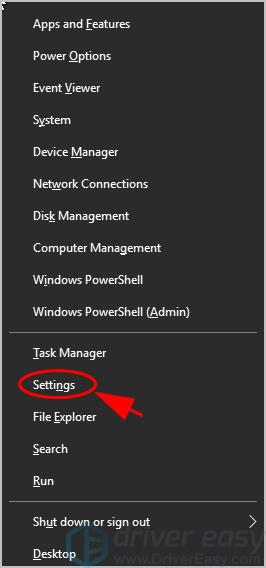
- Click Update & Security.
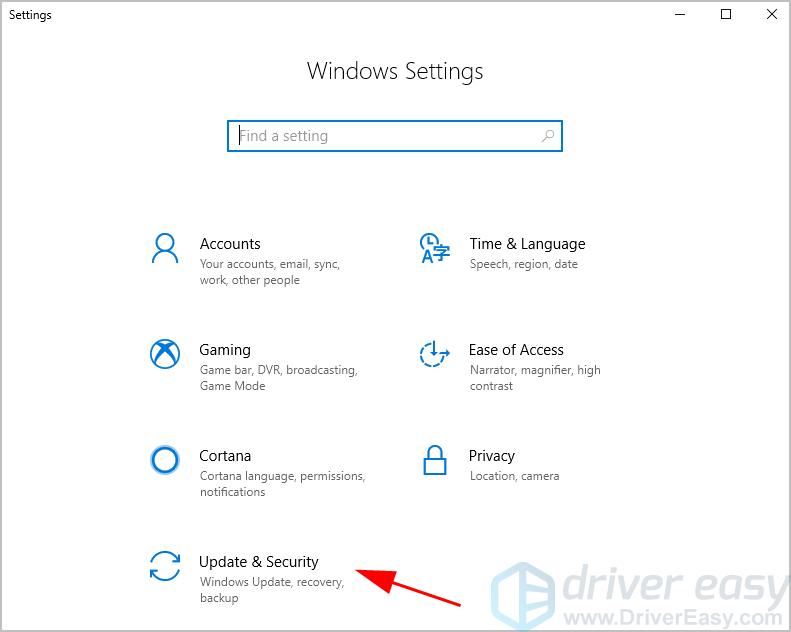
- Click Recovery on the left.
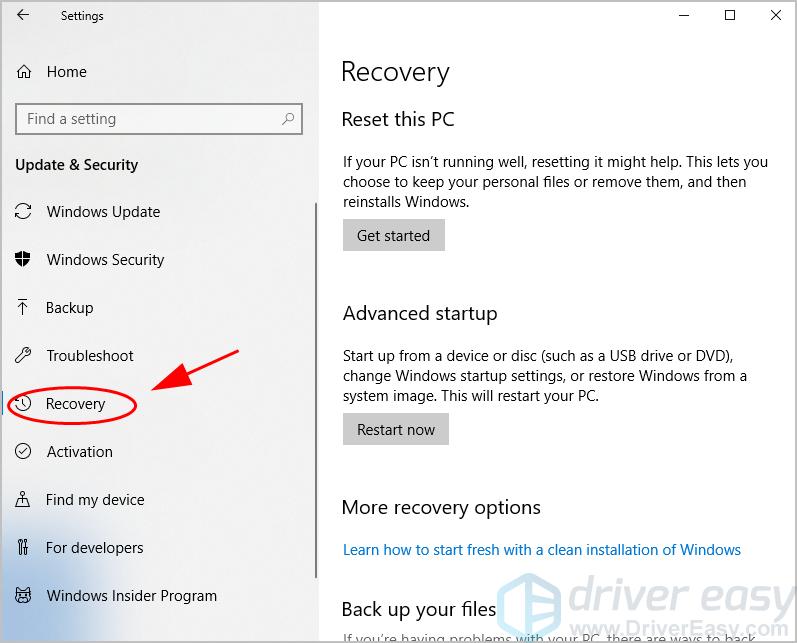
- Click Get started under the Reset this PC section.
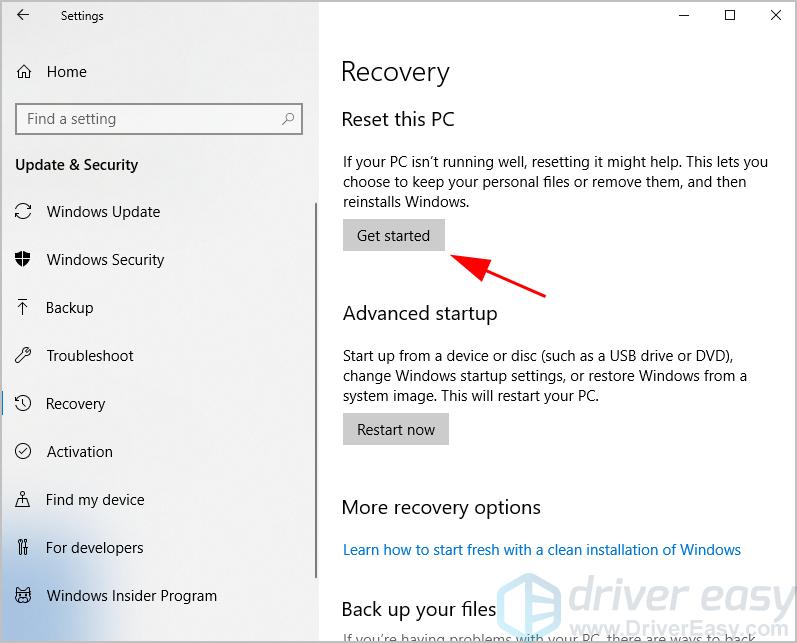
- You’ll see two options available:
- Keep my files: Remove apps and settings in your system drive but keep your personal files.
- Remove everything: Removes all of your personal files, apps and settings.
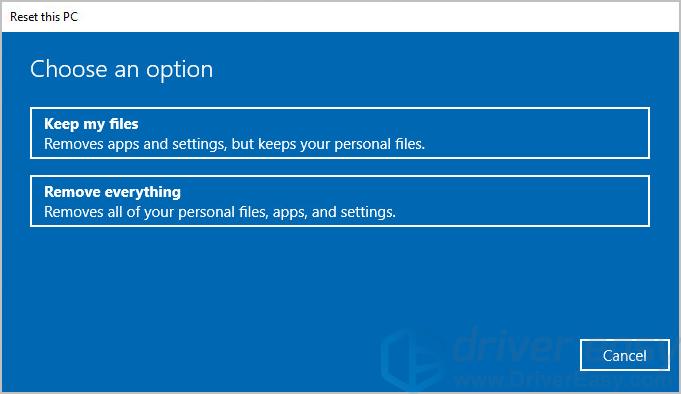
- If you choose Keep my files, you’ll see what will be removed from your computer. Click Next and go on.
If you choose Remove everything, you’ll need to choose remove files from which drive: system drive or all drives. Select the appropriate one and continue.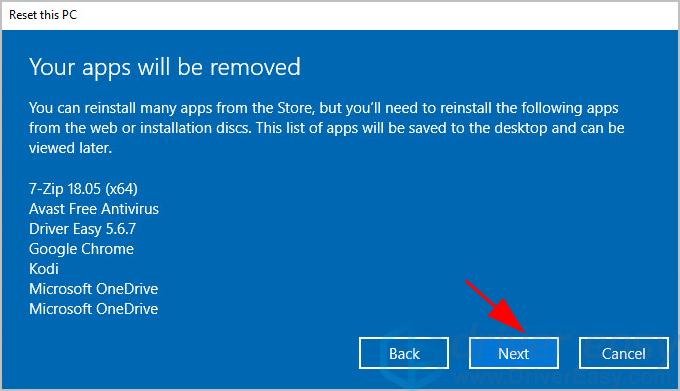
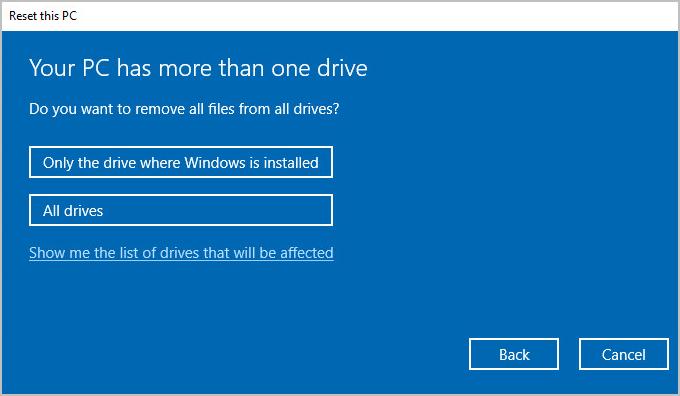
- Then follow the prompted instructions to finish the process. It may take some time, so be patient.
If this method doesn’t work for you, or if your Windows computer doesn’t allow you to log in, don’t worry. There is something else to try.
Perform Reset this PC is Windows can’t load normally
If you can’t start Windows 10 normally, you can try the following steps to perform Reset this PC:
- Make sure your PC is turned off, and remove all external devices (USB drives, printers, etc.) from your computer.
- Press the Power button to turn on your computer, then hold the power button down until PC shuts down automatically (about 5 seconds). Repeat this more than 2 times until you see the Preparing Automatic Repair screen.
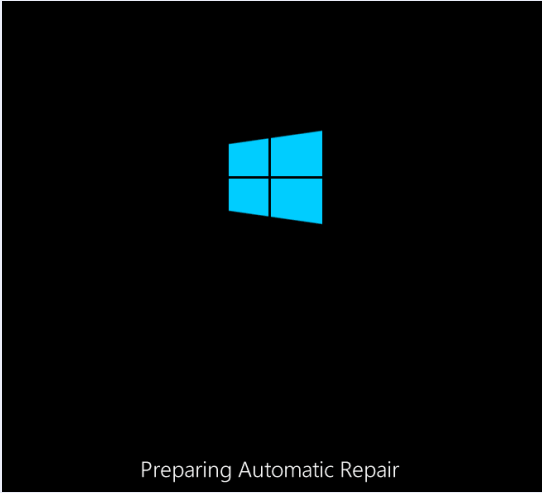
Then waif for Windows to diagnose your PC. - The Startup Repair screen appears, then click Advanced Options.
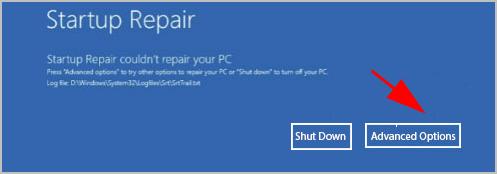
- Click Troubleshoot.
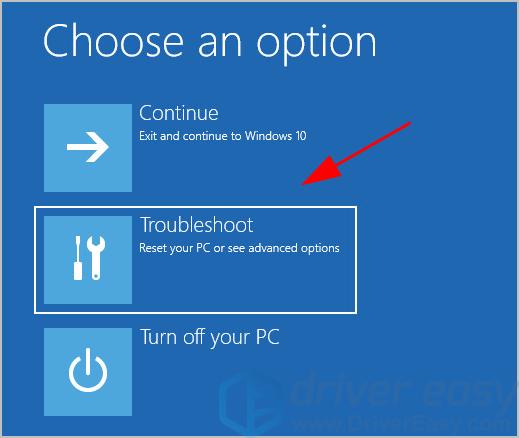
- Click Reset this PC.
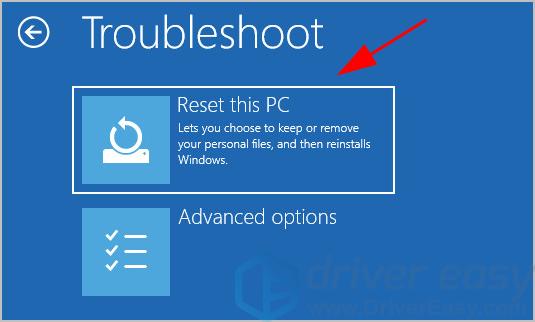
- You’ll see two options available:
- Keep my files: Remove apps and settings in your system drive but keep your personal files.
- Remove everything: Removes all of your personal files, apps and settings.
Choose the option you prefer. Then Windows will automatically restart to get things ready.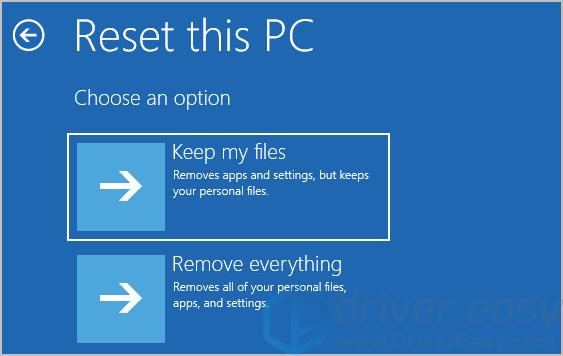
- If you choose Keep my files, you’ll need to choose an account to continue.
If you choose Remove everything, you’ll need to choose remove files from which drive: system drive or all drives. Select the appropriate one and continue.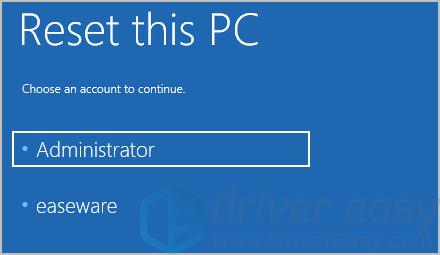
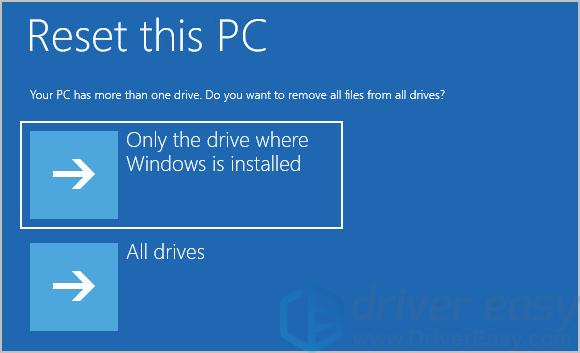
- Follow the prompted instructions to finish the process. It may take some time, so be patient.
So that’s it. Hope this post comes in handy about Reset this PC feature.





